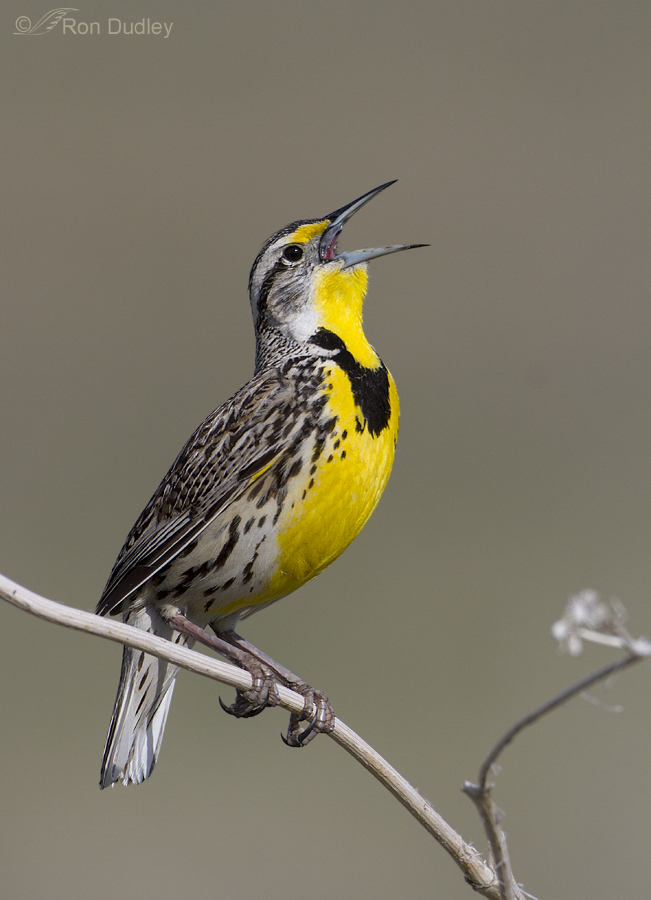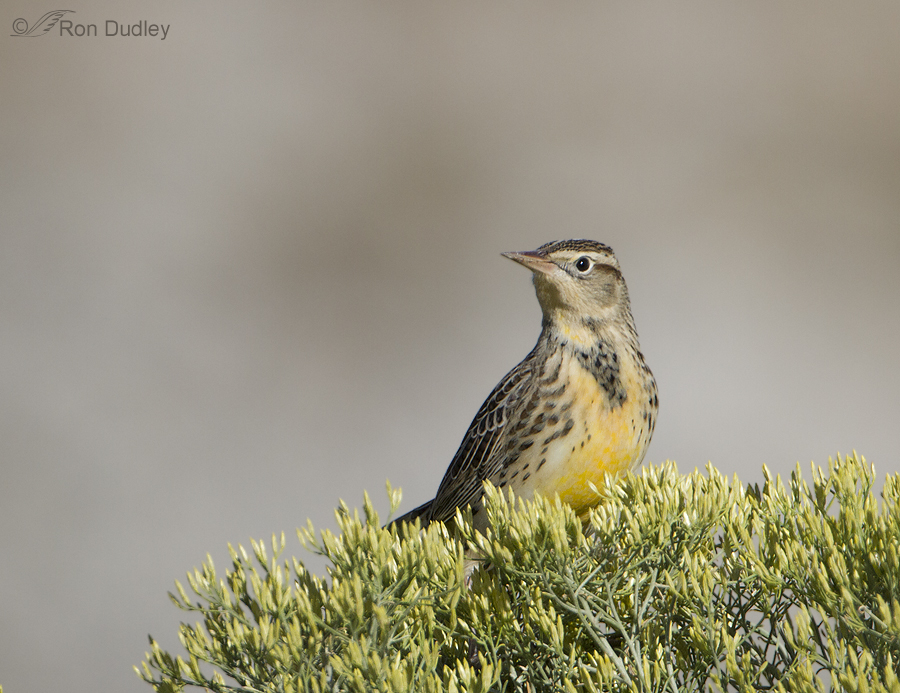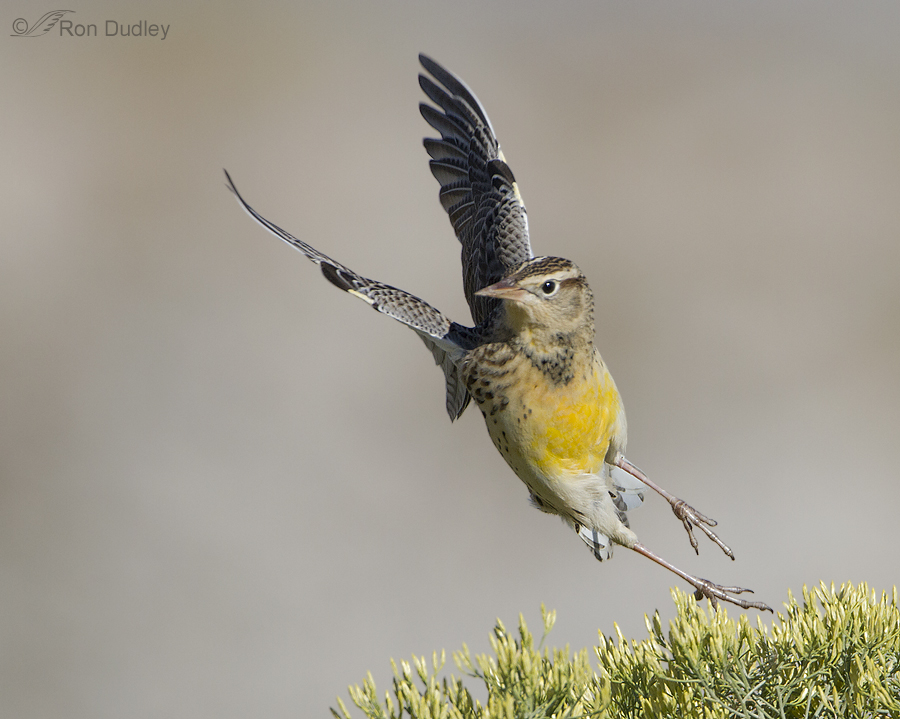Yesterday morning I photographed a juvenile Western Meadowlark on Antelope Island. I have few images of them at that stage of development so I couldn’t help comparing some of the differences between adult and juvenile.
1/2500, f/7.1, ISO 500, 500 f/4, 1.4 tc, natural light
This is an adult in breeding plumage, image taken this past spring. The ventral yellows are intense, as are those between the eye and bill and the deep black “V” on the upper chest stands out strongly against those yellows. Much of the rest of the birds plumage consists of a cryptic mix of browns, buffs and black bars and streaks.
1/4000, f/5.6, ISO 500, 500 f/4, 1.4 tc, natural light
But the markings on this juvenile are significantly more subtle. The ventral yellows are much softer and the black “V” which is absent earlier in the summer is just beginning to appear. Even the brown and buff streaking on much of the rest of the bird is less “contrasty” than those of the adult.
I’m so used to the bright colors of the adult that I found myself actually studying this bird through my viewfinder yesterday – something that seldom happens because I’m usually concentrating on the process of photography while I’m in the field.
As you can see from my shutter speed I was set up for flight/take-off at this point. When it did so it took off…
1/4000, f/5.6, ISO 500, 500 f/4, 1.4 tc, natural light
sideways!
I don’t recall ever seeing a bird take off at this angle before and I had to chuckle when the image came up on my screen. This was another case in point where I didn’t know what I’d captured until I reviewed the images at home.
Serendipity strikes again…
Ron





The take-off photo is priceless! Truly serendipitous.
Hooray for serendipity. I am not sure whether it is just my contrary nature (probably) but I have a huge weakness for the softer, muted colours of the adolescent. I am also a fan of all the myriad ‘little brown jobs’ in the bird world.
I’m with you on the “little brown jobs”, Elephant’s Child and I think the “softer, muted colors” you mention are very attractive on so many females and juveniles of a variety of species where the flashy male in breeding colors usually gets most of the attention.
But I’m convinced that you’re not really “contrary by nature”…
WOW ! Very nice. Thanks for including your settings. What camera and lens are you using ? I am always amazed at the speed that you are able to shoot at.
Len
Len, I use two Canon 7D’s. Most of my shots are taken with the camera that has the Canon 500 f/4 lens attached but occasionally I’m using the other 7D with the 100-400mm lens.
Hi Ron,
As always, I enjoyed these shots very much! I too like that you include your camera settings because I look at them for learning as well.
I’m just curious what mode you generally shoot in; fully manual, aperture, shutter speed, etc?
Thanks for your blog everyday!
Thanks, Bill. I shoot in aperture priority.
Wonderful shots and great observation Ron! I think the reverse may be true of Northern Cardinals. It’s my observation that when they first get their adult plumage, it’s quite bright in both male and females but fades over time.
Charlotte Norton
Believe it or not, Charlotte , I’ve never seen a Cardinal – not once…
Hi Ron
I like the whole composition of the first one very much. The take-off shot however is a master stroke – of intuitively capturing that precise moment of maximum interest. Superbly done!
Paul.
Thanks very much, Paul.
These are just breathtaking in their clarity and detail. Look at those feet about to lift off, those skinny legs – how perfect! And thank you for including camera settings with your photos. I study them closely.
Kelly, Thank you for mentioning that my settings are useful to you. It’s a fair amount of extra work to include them, especially with multiple image posts (I don’t have a plug-in that does it automatically) so it’s nice to know that folks find them helpful.
The adult is striking, especially in full song, but that young one taking off is both appealing and amusing!
I thought so too, Sonja. Thank you.